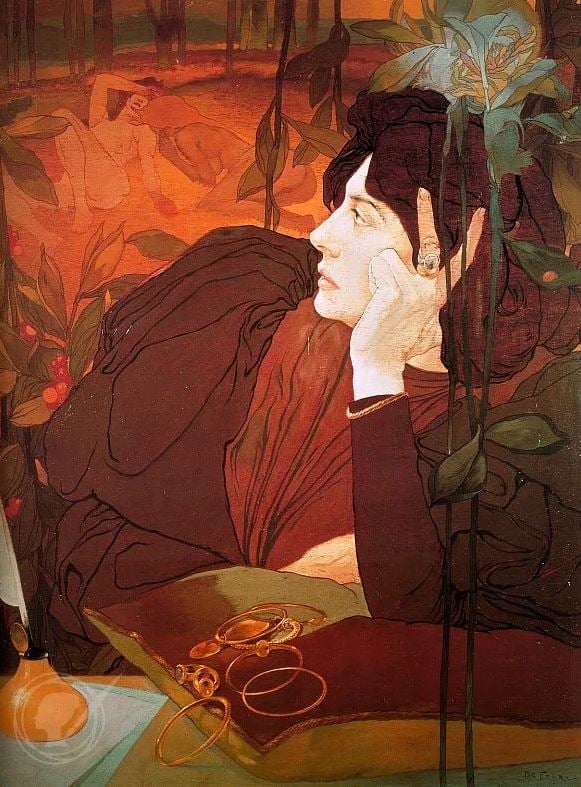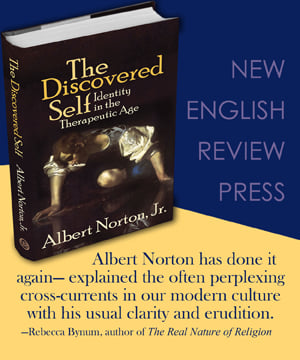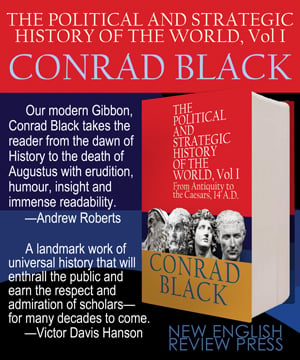by Armando Simón (April 2025)

“Why, do you suppose they will hang a woman? Do you suppose they will be so barbarous as that?”
–
“I wasn’t thinking of that—it’s doubtful if a New York jury would find a woman guilty of any such crime. But to think of her life is she is acquitted.”
——————————————————————————–—Mark Twain, The Gilded Age
I often have female villains in my stories, for which the story (or myself) is invariably labeled misogynistic when some friends read them, especially if the victims of the malevolent women are men or boys.
I also write stories with male villains, yet no one ever objects to those men being portrayed badly.
Apparently, portraying a woman as evil in literature is seen as distasteful by some persons. This is due to the Women are Wonderful Effect, an actual psychological phenomenon. Essentially, positive attributes are more likely to be bestowed on women than on men and, by the same token, women are less likely to be associated with negative attributes. This would explain why women receive lighter punishments than men when they commit crimes and why the idea that women never lie or manipulate is prevalent when it comes to accusations of rape or assault, in spite of abundant evidence to the contrary.
Nor do I write female characters solely in a negative light. Many of my feminine protagonists are heroines in both my stage plays and short stories. But, even so, I am immediately labeled a misogynist whenever I create a female character who is odious (mind you, taken from real life). Contrast that with the fact that most women relish denigrating men, whether men as a whole, or specifically their own boyfriends and husbands (even tandem boyfriends).
And—to be perfectly honest—I have also written female characters exhibiting the negative characteristics that all women have (and which the reader—if he/she is honest—can readily bring to mind). We are not supposed to mention them or criticize them in any way because women are usually presumed as being wonderful for no other apparent reason than they can walk upright on two legs. But the truth is that for millennia, men have had to put up with women. They have been our cross to bear. I am sure at some point Adam must have wished to have had his rib returned.
Anyway, I have vehemently denied the misogynist accusation as absurd. With no success.
From very on as a child, I preferred the company of girls. I could not stand being around boys and was fidgety around them and could not wait to get away. One does not constantly seek the company of persons whom one dislikes. As I grew older my antipathy for male friendship remained, though by my late twenties it lessened.
Meanwhile, during my long lifetime, I have witnessed a radical transformation in women. For centuries, women had the well-earned reputation, or if you will the aura, of being kind, of nurturing, of loyalty to their men and their family, of delicacy, of beauty, of upholding decency (though sometimes to a stifling degree, which is why men often had male-only clubs where they could escape to and relax), of being the cement that held a family together and of being morally superior to men (resulting in the irritable habit of women constantly judging men). Referring to either sexuality or bodily waste was done through euphemisms. Women were put on a pedestal—and rightfully so. They were fiercely defended by men, even at loss of life—which women saw as simply their due, with no need to show gratitude. And by showing decorum, restraint and decency in both word and deed around men resulted the latter acting the same way. An absurd view was that women were seen as being a civilizing force on men.
At the same time, women were very judgmental of anyone within their own gender who betrayed feminine values, using the female weapons of ostracism, vicious comments, coercing their men to submit to their judgment. To be referred to by other women as being A Bad Mother, or A Bad Woman, or A Bad Wife may sound trivial by today’s standards of (vulgar) speech but at that time it had the effect of a fusillade. A woman’s reputation was all-important. To be considered “a lady” or “ladylike” by other women and men was to adhere to a strict decorum; acting like present day “Karens” would have been seen with dismay and an affront to every woman
As for women committing a crime, it was simply unimaginable. Just think of Lizzie Borden’s verdict.
Even at the height of this standard of conduct, though, I could see there were exceptions, or if you prefer, deviants. I was able to see through the aura for what they were. I became fascinated by them and have remained so to this day.
As I grew, I became as voracious a reader of books as an Ethiopian before a buffet. Among many other things, I noticed a pattern in fiction. First, whether novels were written by men or women, the female characters were usually bland. Two dimensional. Boring. Pastel. Often, it was the Victim and Martyr trope. And female fictional characters who were truly evil (such as My Lady in The Three Musketeers) were about as rare as today finding twenty-some year-old girls who are still virgins.
And the same was mostly true in films.
And in both real life and in literature, whenever a woman carried out a reprehensible act, her actions were excused as being due to some man’s fault.
Physical violence in crimes is not women’s forte, which is why evil women have used men as a tool. I have noted in my experience that if the criminals are caught, the man is pictured as having coerced her, and her punishment is invariably less than her partner. Oftentimes, the female criminal will throw her male partner under the bus in order to avoid a heavy punishment to herself by claiming he forced her to go along with the crime. In very rare cases where violence without a male partner being involved took place (such as the serial killer Aileen Wuornos), her actions were “explained” (translation: excused) in film and in courtrooms as being due to early trauma caused by a man. However, the centuries-old form of murder by women has been through poison, a tactic devoid of physical violence.
That is today. But in the 1800s and before, women committing crimes were truly unimaginable; however, violations of the female code of conduct—which occurred at times (adultery, divorce, unwed pregnancy) —were thought of as equally reprehensible from a moral if not a legal standpoint. Yet, in the literature of that century (Anna Karenina, Tess of the d’Urbervilles, Maggie: A Girl of the Streets, Effi Briest) the female characters were portrayed sympathetically by the male author—as Victims, tricked or coerced to do wrong. Not only were the women portrayed sympathetically, but the male characters, again, were considered in one way or the other to be the real culprit.
I stated there has been a transformation in women in the past few decades. This has been due to feminists. Because of them, women gradually and consciously jettisoned their previous goals and values—and have been glorified for doing so. By now, many have adopted what they believe is male behavior, but which is actually a caricature that has been drilled into them. These changed women have what they craved, but they lost what they had. Just compare the language of women prior to the transformation. It used to be refined, spoken with delicacy. By contrast, nowadays, women’s mouths are a sewer.
Recently, I wrote a scathing article on these types of women, explaining why the phenomenon of MGTOW and Passport Bros have been the inevitable result of many women’s conscious decision to become skanks, with dozens and dozens of examples (you might want to wear sunglasses while reading it).
As an aside, something I find curious is that women, prior to and after this metamorphosis, become angry if a man said/says something derogatory about marriage. Even with the skyrocketing divorce rate—overwhelmingly initiated by women—and even with the feminist indoctrination that marriage is an offshoot of capitalist oppression which must be abolished to achieve a Marxist utopia, most women still get upset if a man says that it is stupid for a man to get married. This subconscious vestigial presence of their traditional—one might say instinctual—values like marriage is also reflected in the verbiage surrounding abortion. I personally have mixed feelings on the issue of abortion, but I am disgusted with the euphemisms employed—such as the word itself, “abortion” (I like Chris Rock’s trolling the pro-Choice: he supports a woman’s right to choose to kill babies). When abortion’s significance is waved away with the words stating that the fetus is a clump of cells, my rejoinder to a pro-Choice person is, “You’re a clump of cells—a big fat clump. I’d like l to kill you now.”
Unlike literature, some modern films have mirrored this transformation for the worse in the female gender, and although numerous movies still continue to be made with the Victim and Martyr cliché, there has been variation. For example, contrast the heroine of two science-fiction movies, Creature From the Black Lagoon and Aliens; the former is a helpless, useless, screaming victim while the other kicks alien ass. More importantly, women began to be portrayed as cinematic villains in rapid succession: Black Widow (1987), Fatal Attraction (1987), Misery (1990), Poison Ivy (1992), Single White Female (1992) The Hand that Rocks the Cradle (1992), Fatal Instinct (1993), Scream 2 (1997). A more recent one was Gone Girl (2014). One of the reasons that these films have been successful is that they finally reflected the change in women, by showing that some women are, indeed, either evil and/or bat shit crazy.
But in literature, even with the present day proliferation of skanks, female teachers seducing their underage students, malevolent ex-wives, and screaming “Karens” within society, portraying women as evil still appears to be a taboo by many persons.
And the most despised, nauseating, rage-inducing crime carried out by some women is one I touched upon in two stories and will never revisit again, It is the deliberate murder of a child, or children, by their mother, whether it is through stabbing, poisoning, shooting, drowning, or starvation. Maternal infanticide is the odious betrayal and murder by the one person most trusted by the victim who, in turn, is the most innocent and vulnerable. It is too shocking and is the biggest taboo in literature, so taboo that it has not even been considered as a lengthy topic of literature. I do not think it ever will.
Table of Contents
Armando Simón is the author of This That or The Other and Orlando Stories.
Follow NER on Twitter @NERIconoclast
- Like
- Digg
- Tumblr
- VKontakte
- Buffer
- Love This
- Odnoklassniki
- Meneame
- Blogger
- Amazon
- Yahoo Mail
- Gmail
- AOL
- Newsvine
- HackerNews
- Evernote
- MySpace
- Mail.ru
- Viadeo
- Line
- Comments
- SMS
- Viber
- Telegram
- Subscribe
- Skype
- Facebook Messenger
- Kakao
- LiveJournal
- Yammer
- Edgar
- Fintel
- Mix
- Instapaper
- Copy Link







3 Responses
I thought I would read this for its cautionary advice (:)). But it is so quotable, I made two mentions of it on my Facebook.
I wonder what Sherlock Holmes would say ALL about his (attractive) female intriguing ‘nemesis’?
There’s an evil woman with the mind of a fish in Patrick Hamilton’s Hangover Square. Mind you, Hamilton was a misogynist who tried to ‘cure’ himself of this affliction by marrying a prostitute, which suggests that he wasn’t very intelligent.